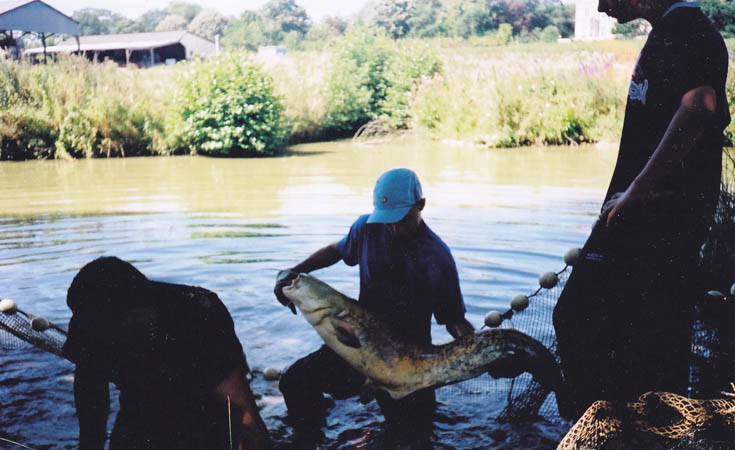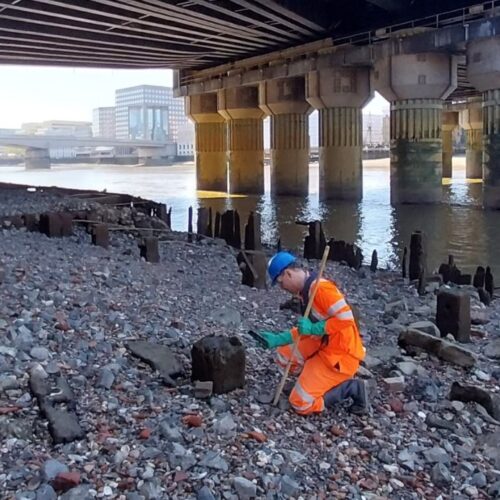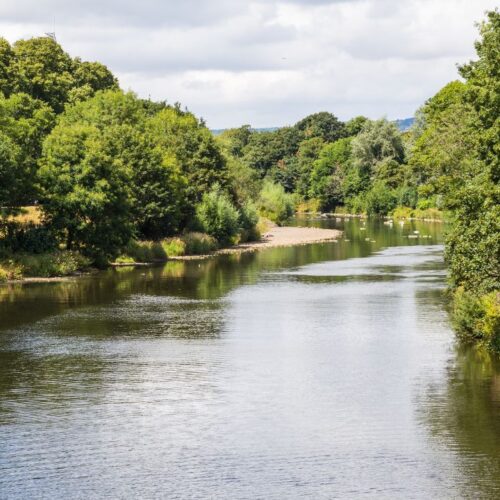Fish are a prominent feature of freshwater systems in the UK and surveys for fish are often required as part of the development process. Fish expert at Thomson, Ecologist, Joseph Baker, talks about why fish are protected, and the types of surveys typically undertaken to facilitate a planning process with respect to developments in the UK.
Protected fish species
Like so many other species in the UK, fish also receive protection under legislation. This is reflective of their historic declines and the vulnerability of these species to further threats. This has been evident in some of our most familiar fish such as the Atlantic salmon (Salmo salar), brown/sea trout (salmo truttra) and European eel (anguila anguila) – and it’s something that developments need to be aware of.
The European eel alone is thought to have undergone a 90-95% decline in the last 25-year assessment, undertaken in 2013 (Jacoby & Gollock, 2014). While spawning populations (JNCC, 2018) and mature wild salmon stocks have fallen by 50% and wild stocks by 70% respectively over the same period. These figures reflect the need to properly mitigate against any further decline of these species, and firmly sit under the environmental compliance banner.
If you’re likely to encounter fish species listed under The Wildlife & Countryside Act or species listed as Species of Principle Importance under the Natural Environment and Rural Communities Act 2006, you may need to consider surveying for fish. Why? Because they are a material planning consideration, and to be non-compliant is an offence. Furthermore, this applies if the project is in or close to a Special Area of Conservation (SAC) for species listed under Annex II of the European Commission Habitat Directive.
Invasive and nuisance species

Fish surveys and mitigation may need to be considered if invasive or nuisance species are present within a water-body, which can cause severe ecosystem damage. Fish species listed under Schedule 9 of the Wildlife and Countryside Act make it illegal to release or allow these species to escape into the wild.
This applies to any animal which is not ordinarily resident in Great Britain and is not a regular visitor to Great Britain in a wild state. It is also an offence to release any fish listed under The Prohibition of Keeping or Release of Live Fish (specified species) order 1998.
Fisheries Management
Conversely native fish may become a nuisance for commercial fisheries if stocking densities become too high. This can result in the deterioration of water quality, food biomass and fish health – resulting in a downturn in business productivity.
Angling is one of the largest recreational sports in the UK, and many specimen fish have high monetary value. Where works are required on inland water-bodies, such as dam repairs, it is often required that the specimen fish and stake-holding fishing clubs are mitigated for.

Engaging and clear correspondence with angling clubs and governing bodies is essential for effective mitigation. This also presents an opportunity for further community development with these groups. Mitigation measures can include permanent fish relocation, temporary holding of fish or fish re-stocking. In such instances where fish removal is required, consent from the Environment Agency must be obtained and fish health checks, to prevent the transfer of diseases, may be required before consent is granted.
Fish impacts on other protected species
Fish can also be a nuisance for conservationists managing species such as great crested newts. The larvae life stage of the great crested newt is particularly vulnerable to fish predation. It may be necessary to manage fish presence, particularly if it is part of licence conditions – which are part of European Protected Species Licence Applications (EPSL). A good example of how we have been achieving success in this area is through the London Gateway project.

Fish surveys
As an environmental consultancy, Thomson is proficient in undertaking fish surveys. We understand that fish can be incredibly illusive animals and for that reason, we typically enlist the aid of our electric fishing equipment or large seine nets to capture fish.
When operated correctly, electro-fishing techniques can be significantly less intrusive than conventional methods such as netting. This is due to the speed at which fish are captured and released as well as the fact that fish are at no risk of becoming tangled in nets.
A portable generator produces a weak electrical field within the watercourse. Fish are attracted to this field making it possible to capture them via a hand net. In the case of fish depletion surveys, fish are measured and weighed before being returned to the watercourse.
Fish surveys like these are important to understand things like population sizes and species richness so that the appropriate level of mitigation for any development is recommended.
A new technique that is also on the Thomson radar is utilising environmental DNA (eDNA) surveying for fish. The technique has been integrated into standard survey protocol for protected species such as great crested newts and is on the edge of the market currently for commercial fish surveys. It’s application, as a rapid assessment technique for establishing fish and invasive fish presence could help to streamline fish surveys and reduce cost.
How we can help you
If you’re unsure about fish legislation, survey and mitigation work for fish, we have freshwater specialists with the expertise to advise and help you. Get in touch today to get your planning in early and avoid swimming upstream when it comes to legislation.











